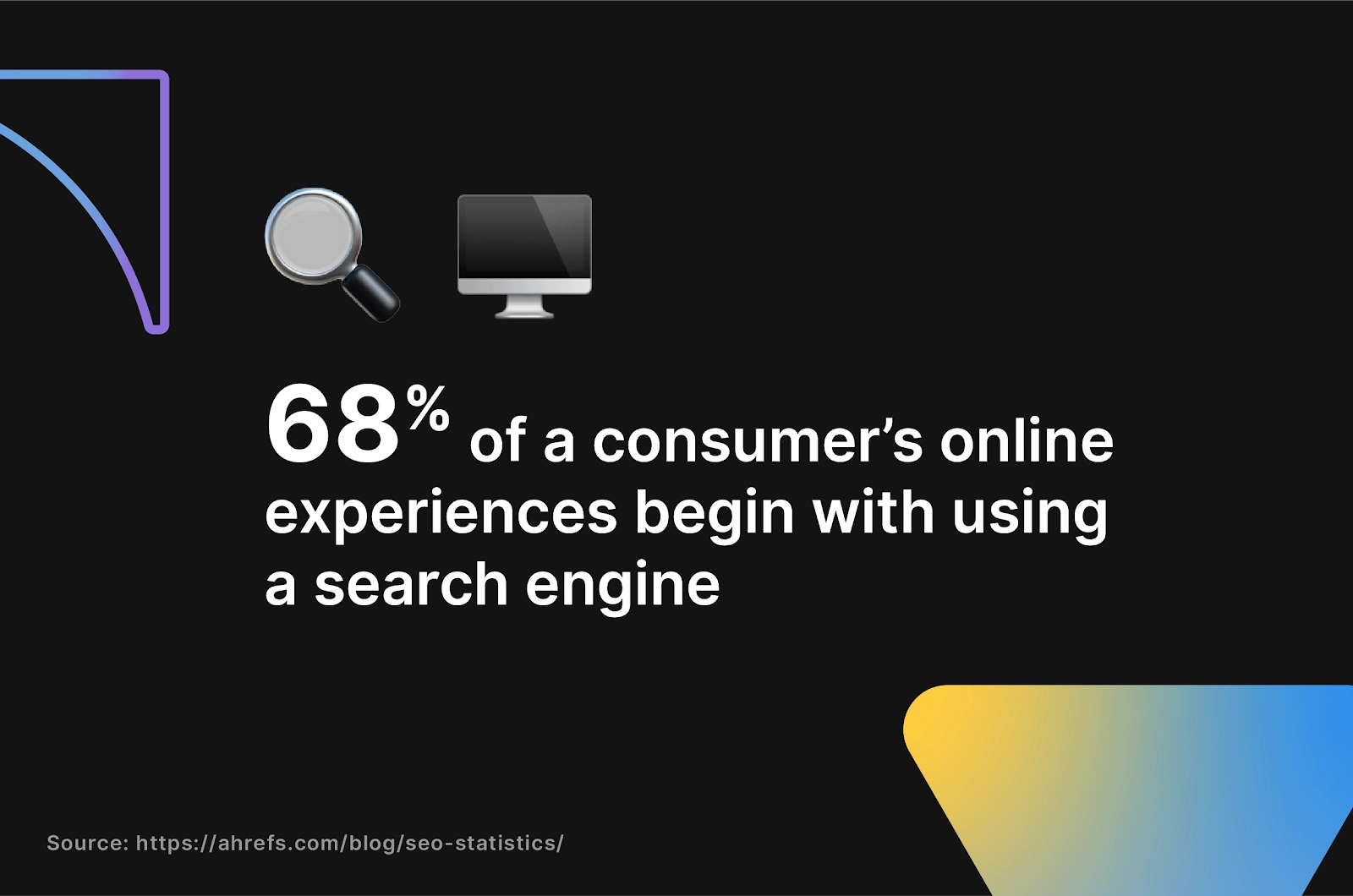How to Build a Writer Portfolio Website

Portfolio.
Or worse, website.
*Shudder*
Are there any words scarier than these for independent writers?
(Well, maybe “deadline,” but I digress.)
For way too long, building out a professional writer portfolio website has taken too much time, cost too much money, or both.
But wait, aren’t there entire platforms that’ll host your writing and give you an avenue for connecting with clients?
There sure are — as long as you’re cool with competing against the absolute lowest bidder and still giving a huge cut of your meager earnings back to the platform.
Or instead, you could try to keep up with all the quasi-professional social media websites where you’re supposed to somehow balance sharing your work and networking without alienating the more personal relationships you’ve built.
Sound exhausting?
That’s because it is. Trust me — been there, done that.
So what’s an independent worker to do when it comes to creating an affordable, professional, and manageable writer portfolio website?
That’s what we’re going to answer today.
But before we show you not one but two different approaches to building out your portfolio, first let’s reiterate why it’s so vitally important that independent workers have a portfolio at all in today’s business environment.
What is a Writer Portfolio Website and Why Do I Need One?
Just to make sure we’re on the same page, let me explain what I mean when I say “writer portfolio website.”
A writer portfolio website is the digital home of your business. It’s the place where you can present your work and other important information about yourself as an independent worker so that anyone who wants to hire you or partner with you can see whether you’re a good fit at a glance.
Make sense? Great.
Then it’s time to dive into the fun stuff — why it’s more important than ever before for freelance, independent writers to have professional, modern portfolios in our increasingly digital world.
Your Portfolio Is Like a Dating Profile for Your Business
Like we mentioned above, a writer portfolio website is all about showing off who you are — and, by extension, what your business is all about.
It’s your chance to tell potential clients and project partners what style, skills, and services you bring to the table; what your unique expertise can do for them; and, just as importantly, what you can’t do for them.
In other words, a writer portfolio website is like a modern, digital dating profile where leads can see whether you’d be a good fit for an ongoing (professional) relationship.
The truth is that the internet is more saturated than ever with people making the shift to independent work.
Don’t get us wrong — we think that’s awesome! After all, our founder Ben Huffman’s vision for the future of work is companies bringing together digital, independent workers as needed to complete creative projects.
But what that means is that you need more than a killer resume (outdated!) or an enticing cold email template (bleh 🤢).
Today, you must have a writer portfolio website that catches the eye of potential partners and clients, tells them just about everything they need to know at a glance, and finally makes it easy as all heck to start working with you.
A Writer Portfolio Website Gives You a Place to Put Your Best Work Forward
If a potential client or work partner were to Google your name, they’d probably find several different profiles and examples of your work spanning the course of years.
The idea of a writer portfolio website is to make it so that leads don’t need to Google your name. Instead, they have access to a one-stop-shop where they can see exactly what you want them to see.
This is important because it allows you to present your most current and/or your best work so they can understand what you have to offer today — not what you had to offer as a journalism student five years ago.
Having an up-to-date writer portfolio website is especially important for people who are new to independent work and don’t have a ton of samples yet. With a strong website, you can be sure to highlight the clips you do have instead of drawing attention to the fact that you don’t have a lot.
A Writer Website Is an Outlet for Announcements
Adding a new service to your repertoire?
Upping your pricing after an especially prosperous year? Or, running a special offer to fill out your client roster a little more?
Excited to share a new byline with an illustrious publication?
Awesome, we love to see it.
But, how can you be sure all your current and potential partners will see all your cool news?
Use your writer portfolio website as an easy place to broadcast important updates.
Your Writing Portfolio May Motivate You to Keep Creating
Whether you’re a full-time independent worker, a part-timer looking to go full-on freelance, or a moonlighter who’s happy with your current sitch; many of us have experience downtime between projects.
During these times, it’s easy to fill your days watching the entire Stranger Things catalog...again.
And there’s nothing wrong with taking some time off once in a while!
But these times also make for a great opportunity to beef up your samples, work on honing your craft, and keep flexing your creativity.
Knowing you have a writer portfolio website out there that could always benefit from some fresh content is a great motivator to encourage writers to keep creating, even during slow periods.
Your Writer Website Can Help You Get in front of More Clients and Connections
We probably don’t have to tell you that today many business transactions and relationships start online.
This reality has only been accelerated since COVID-19 pushed the vast majority of our daily interactions to become digital.

When you’re no longer able to make great working connections by going to conferences and attending get-togethers in your local community, your digital identity becomes one of the only ways to put yourself in front of clients and partners.
Having a robust online portfolio is also key to search engine optimization (SEO), which is basically the practice of tailoring your online presence so it’s easy for people who are looking for the services you provide to find you.
By creating a singular writer portfolio website complete with all your writing samples and key details about your business, you’re increasing your chances of being found by the best (future) business partners and clients — no matter where they’re located.
What to Include on Your Writer Portfolio Website
OK, OK — enough about all the awesome benefits of having a writer portfolio website.
Now, let’s cover the basics of what your website should include:
Information about you: Especially if they’re going to sign up to work with you without possibly ever meeting you face to face, leads want to know more about who they’re dealing with. Be sure to include information that displays why you’re the best person for the (right) job and what sets you apart from other writers who might seem similar.
Your niche(s): Whether it’s finance or food, clearly communicate the niches in which you have worked or want to work. This positions you as an expert in your preferred fields and helps weed out people who may not be a good fit.
Services: After price (which we’ll discuss next), a list of the services you provide is one of the first things a prospect will look for on your website. Like it does with niches, clearly communicating your services helps ensure you only generate leads who are a great fit for your expertise.
Pricing: This can be a bit controversial, but we think it’s high time independent workers demanded a fair wage and proudly displayed that stance on their websites by being upfront about pricing. Plus, there are plenty of benefits to unabashedly detailing your pricing online: It helps position you as a professional, it can weed out low ballers, and more.
Contact information: If you want potential clients and work partners to be able to contact you via your portfolio, make it easy for them to do so! If you’re the kind of person who will keep on top of it, we recommend using your website’s built-in contact form or messaging system. If that’s not your style, be sure to include other contact info such as your email address, links to social accounts, etc.
Writing samples: Last but not least, your writer portfolio website should of course include samples of your writing! While you might have plenty of samples, we recommend highlighting no more than five of the strongest pieces that display your expertise in each niche you want to serve.
Sidebar: What If I Don’t Have Any Samples for My Writer Portfolio Website?
Just getting started and don’t have a lot of — or any — writing samples?
That’s OK!
There are a few things you can do. First, absolutely rack your brain for anything you’ve written in the past that you can use. Did you write for the newspaper in high school or college? How about all those marketing emails you wrote that summer you volunteered for a local farm (true story)? Track down that old content, double-check that it’s still representative of your quality of work, and start there while you build up more samples using the next tactic.
If no recognized publication has posted your work yet, publish some yourself!
Today, anyone can set up their own blog or even create a profile on a self-publishing platform and start creating content. Write like you’re on assignment for your dream client and you’ll have plenty of share-worthy clips for your portfolio in no time.

How to Build Your Own Writer Portfolio Website
Armed with the knowledge of how important your writer portfolio website is and all the information you need to create a great one, let’s finally get down to the nitty-gritty.
Time to build.
Get Ready… Identify the Content You Have and the Content You Still Need
No matter which of the following methods you choose for developing your portfolio website, the first step in fleshing it out is going down your list of “must-haves” to make sure you have the content you need to make each element complete.
For example, for your personal profile you’ll probably want to write a short bio as well as find a great picture that represents yourself and your business.
For your services? You’ll want to come up with a title, a description, and a price for each.
And how about samples? These might be the heaviest lift of all — making sure all the URLs you want to include are live or that you’ve saved the work in another linkable format, checking that you have enticing main graphics for each, creating short descriptions if you need them, and so on.
Getting all of this info together in one place helps you identify the gaps that need to be filled in and ensures that things go smoothly when it comes time to eventually build out your portfolio.
And Go! Two Different Ways to Make a Writer Portfolio Website
Let’s explore the prevailing techniques for creating a robust writer portfolio website.
The Old Way: Build Your Writer Portfolio Website from Scratch
Independent writers who are technical savvy, have plenty of time on their hands, and want ultimate control over every piece of their portfolio may choose to build their writer portfolio website from scratch.
Here are the high-level steps of what that might look like:
Pick your platform: First you’ll need to track down your build-your-own-website platform. If you’re a true customization junkie, this process might take a while as you compare features to see which platform will give you the most control.
Choose and purchase a domain name: The domain name is the URL that takes people to your website. It has to be unique, and ideally it will feature your name or your business name in some way. Visit a domain name registrar (GoDaddy is one you’ve probably heard of) to purchase your domain — which you’ll have to renew and pay for yearly.
Time to build: Now for the fun part (depending on your outlook)! You get to flesh out your website. Of course it depends on the website platform, but you’ll likely need to create pages, add content, layer on design and graphics, and do all the other stuff that rounds out a complete website. Be prepared to spend a lot of time perfecting things in this step.
Set up hosting and launch your website: A website host provides a “home” on the internet for the files that make up your website. Your platform might have built-in hosting, but if not GoDaddy is again a popular resource. This is another service that you’ll pay for yearly. And with that setup — you’re ready to launch your website onto the world wide web!
Stay on top of maintenance: One very important fact that many website newbies aren’t aware of is that they need to keep up with the updates that their website platforms make to their software. Staying current with these gives you access to new features, bug fixes, and security upgrades. Before each update, be sure to back up your website so that all your files are safe in case anything goes wrong during the process.
The Modern Way: Start Your Independent Journey with a Writer Portfolio Website on Contra
Did you think that last section was kind of, well, a lot?
Yeah, us, too.
In fact, we thought enough people agreed with us that we went ahead and invented the best alternative to the freelancing platforms that take a huge cut of your earnings and the “DIY” website platforms that practically require an engineering degree to get right.
We invented Contra: A modern platform where independent professionals can create profiles that highlight the work they’ve done and the community they’ve built — not just the title they had at their last job.
And, you can do it all in just a few clicks using our powerful yet thoughtfully-designed interface that puts the spotlight on you and your work.
After all, when the majority of consumers report that they determine the credibility of a business based on its website, a great-looking and perfectly-functioning interface should be a given, not something you have to struggle to create.

If you’re interested in trying out Contra, follow the next four steps to get your writer portfolio website up and running in less than a day.
Sign up With Contra and Create You


r Profile
Get started by visiting our Sign Up page and creating an account.
Once you’re logged in, the first thing you want to do is fill out your profile with information like your name, location, preferred title, skills, and a photo.
On your Contra About page, you can also add your preferred social accounts and a short biography.
But this is just the beginning of building your identity as an independent worker on Contra.
Now, it’s time to add your work.
Add Past Work Projects
Projects are where your work samples go, and they’re central to your Contra profile. They can include tons of information about a piece of work, from its title to a description, the company you completed it for, your role, the tools you used, and even who you collaborated with to complete the project.
Add Projects to Contra to show potential work partners and clients your skills in action. To learn more about using Projects, check out our guide.
In addition, Projects give you a platform upon which to build your community on Contra — which we’ll discuss next.
Build Out Your Community
On Contra, your community is a collection of people you already like working with or wish to work with.
Building your community on Contra creates a powerful network where you can get referrals for more work in the future — and it all starts with adding collaborators to the Projects you upload to your Contra profile.

We’re working on even more community-building features such as being able to add collaborators to the specific services you provide, recommendations lists, and more.
To learn more about community on Contra, read our guide to Building Your Community.
Complete Your Services and Pricing Details
And to fully round out your Contra profile, be sure to add your Services. Each service can have a title, description, price, and even your timeline for turning it around. Contra’s Guide to Services has even more details about Services and examples to help you make your profile shine.

And just like that, your writer portfolio website is done!
No more long nights spent tweaking your custom-built website to get that work sample to display the way you want it to.
No more long projects spent dreading the final payout when you’ll lose 20% or more of your hard-earned payment in an instant.
Contra offers everything an independent writer needs to complete an easy-to-look-at and easy-to-maintain portfolio website — and we don’t take a cut of your profits to do it.
But, you don’t have to take our word for it.
Like this project
Posted Mar 25, 2021
Likes
0
Views
457




